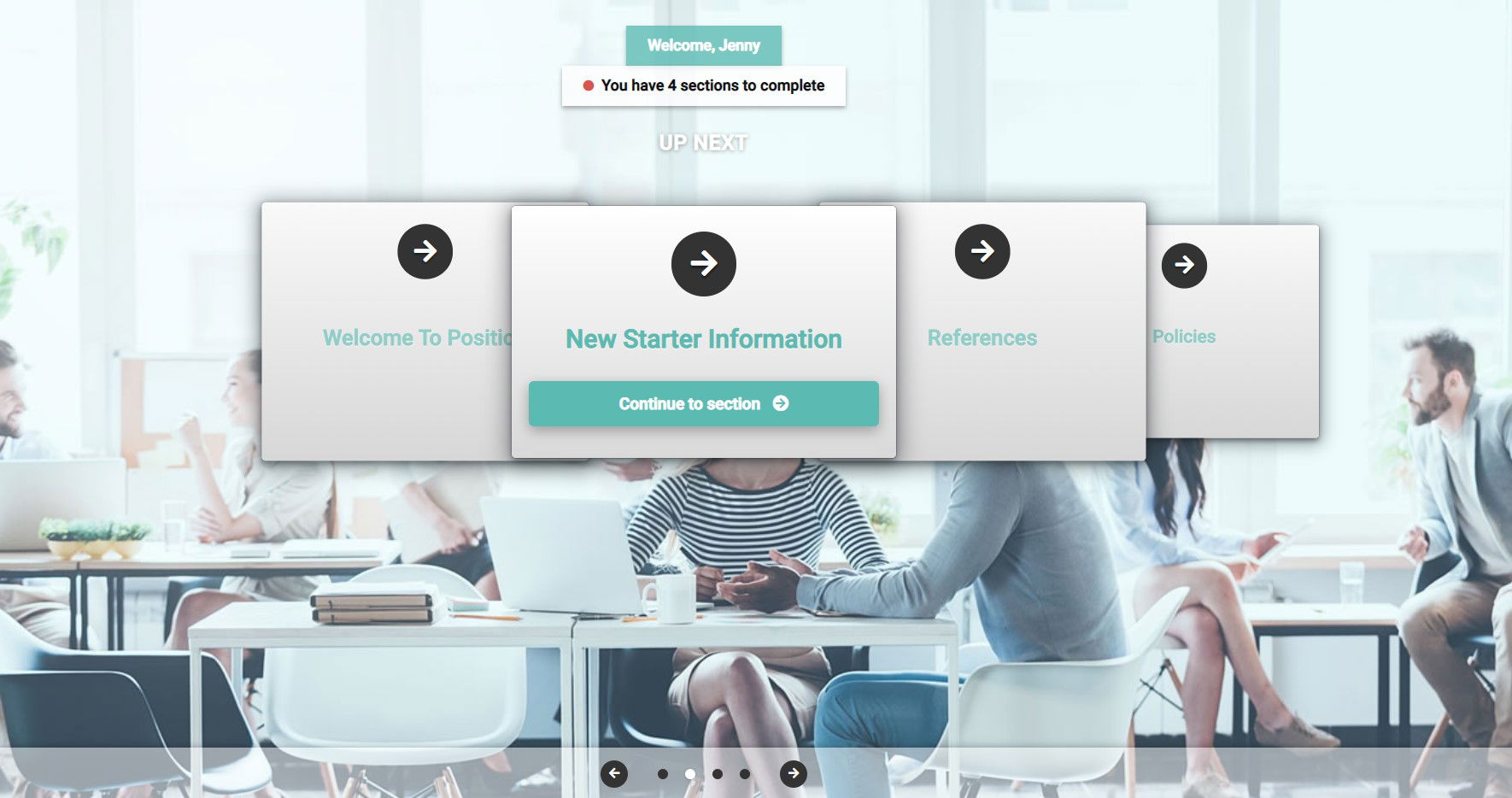Recruitment automation uses technology to empower your recruiters to add more value.
Recruiters add most value when they apply their unique perspective, expertise and judgement. Like, deciding an unconventional candidate’s worth a chance, or persuading an on-the-fence candidate to choose you despite a higher offer elsewhere.
Recruiters add least value on the mechanics of the recruitment process. Like, sifting through hundreds of irrelevant applicants, scheduling interviews and reformatting job adverts for twenty different boards.
That’s where recruitment automation makes sense, working with your recruiters to amplify their impact.
Using recruitment technology to automate some of your recruiting processes increases efficiency, so your recruiters can get more done faster, with fewer resources (and have a better time doing it, too!)
Let’s look at the different recruitment touchpoints that lend themselves well to automation.
Here are 15 ways to embed recruitment automation in your processes
1. Pre-pre-screening
There’s pre-screening, and then there’s pre-pre-screening. Pre-pre-screening means you include pre-defined ‘killer questions’ at the very start of your application journey. They’re questions that result in automatic rejection if candidates give the wrong yes/no answer.
For example, ‘are you eligible to work in the UK?’. Or ‘do you hold a UK driving license?’
Automating pre-pre-screening means recruiters don’t waste time reviewing CVs that are definitely unsuitable, and jobseekers don’t waste their time with a pointless recruitment process.
2. Pre-screening questions with automated ranking
Pre-screening questions add another layer of recruitment automation early in your process. Depending on your ATS, you should be able to add whichever questions you want into your application then have answers automatically scored and ranked according to your pre-set criteria.
That way, your recruiters can review the best applicants first – to zero-in on great people faster. That accelerates time-to-hire and makes securing the best hires more likely. And it’s a much nicer experience for recruiters, who don’t get snow-blind reading CV after CV (good for retaining your recruitment team!)

3. Automated shortlisting and rejection
The best recruitment technology (yes, we mean Tribepad ATS…) can take automation even further, by automatically shortlisting or rejecting candidates depending on their pre-screening questionnaire scores.
Say 65% of applicants score between 20 and 40 on your pre-screening questionnaire, for example. But 20% score under 20 and 15% over 40.
Instead of recruiters manually having to uncover those 20% – who need ruling out immediately – or those 15% – who need interviewing as fast as possible – you can automate that process.
So your best candidates get an interview immediately and you don’t risk losing them to a competitor. And the worst-fit applicants get fast closure – all any unsuccessful candidate really wants. And your recruiters spend their time having positive, proactive conversations, not doing manual recruitment tasks you could easily automate.
4. One-way video interviewing
Telephone interviews really suck. They’re time-consuming, repetitive, and only give a basic impression of candidate quality.
Plus they’re inherently inconsistent (wouldn’t you be less chirpy on your 1000th call of the week?!). That’s not great because it risks damaging the candidate experience, which could push your quality-of-hire down as the best candidates sign elsewhere. And inconsistency creates space for bias, which is the enemy of diversity.
One-way video interviewing automates the process, so your recruiters only have to write questions once, no matter how many candidates you’re handling. Despite being less effort, that means you also get a more vibrant picture of candidates – so you’re bringing better-quality people through a more consistent recruitment process.
5. Video interview profiling
The best recruitment technology can automatically analyse video interview answers using AI, facial recognition, NLP and speech analytics, to build a candidate profile. That supplements and complements recruiters’ judgement, so they can make better decisions, faster.
Listen to our Founder and CEO’s recent podcast on AI in Recruitment
For example, you could learn that Caroline is more ambitious than other candidates for this role, while Jake’s more dedicated but less ambitious. Now say you’re recruiting for entry-level call centre positions. You’ve had a problem with people leaving because the promotion trajectory isn’t there, and your retraining costs are sky-high. Maybe Jake’s exactly the sort of robust, solid worker you want.
6. Automated translations for international recruitment
If you recruit internationally, you likely spend hours localising your process into other languages.
And unless you have native-speaking recruiters for every geography, either recruiters or candidates are forced to interview in a language they’re less comfortable with. That creates space for misjudgements which impact the candidate experience and quality-of-hire.
If that’s you, look for recruitment technology that automates localisation so candidates interact with you (every screen; every email; every button) in their language, without you hiring translators or manually translating.
And if you video interview, look for software (*cough*, Tribepad Video Interviewing) that automatically translates candidates’ answers using AI-enabled speed-to-text transcription.
Automation ensures international recruitment mirrors the same great candidate experience and delivers the same quality-of-hire as local recruitment, without delays.
7. Candidate-led interview scheduling
One of the most time-consuming parts of recruitment is interview scheduling, especially if you recruit at high-volume. Scheduling back-and-forth is a terrible use of recruiters’ time.
Automation-rich recruitment technology should include automatic scheduling functionality instead. So recruiters and hiring managers can pre-set their availability and candidates self-book as suits.
8. Candidate communication
If you’re recruiting at scale, your recruiters probably send the same messages thousands of times over. Like invitations to interview, or a reference requests.
Automating those moments can save your recruitment team hours each week. Craft messages once (or customise from pre-written templates, depending on your recruitment tech) then they’re automatically sent at the right time, to the right people. Typically with personalisation tags, so they feel like one-to-one communication.
It’s much faster and it’s much more consistent. Nothing forgotten, no delays and no accidental miscommunication.
9. Sourcing CVs
CV sourcing can be long-winded and demotivating, as recruiters trawl through endless pages of CVs on external job boards. And make endless calls only to discover CVs are old, candidates are long-since off the market or they’re in-process with 2000 other recruiters.
Your recruiters can use recruitment automation to build a shortlist faster, instead.
The more robust your candidate database, the less that happens (and the lower your agency spend and the faster your time-to-hire). The best ATS’s have talent pooling functionality and will parse your job requirements against your database to automatically suggest CVs.
10. Creating job adverts
The quality of your job adverts impacts applicant volume, applicant quality, quality-of-hire and diversity. But if you recruit at volume, you can easily lose control over the ads representing your business.
At best, the result is inconsistency that undermines your employer brand. Or a poor advert that doesn’t compel applications. At worst, bias slips through and you risk being publicly called out.
Great recruitment software automates the process. Your recruiters build a library of adverts upfront (here’s how to write them…!) then your recruitment tech automatically populates them into relevant jobs.
So you invest energy upfront making your job adverts awesome – and then trust your online ad presence is under control. (And save recruiters trawling through their computer to find the most recent version of an old ad, or spending hours writing the same thing ten times over).
11. Posting job adverts
Large businesses recruiting for multiple brands, sites, divisions and roles might post hundreds or thousands of jobs to tens, if not hundreds, of job boards. All with slightly different requirements and formats. Across the recruitment function, that’s hours your recruiters spend on manual, boring, data input.
Instead, use recruitment technology to automate job board posting straight from your job descriptions. That way, recruiters insert a job description once (typically from a template, so it’s double-easy) and click to populate to whichever boards they’re using. It’s a huge time-saver.
12. Internal recruitment workflows
Recruitment’s like a series of islands linked by bridges. The islands are the valuable touchpoints – where you’re screening CVs, interviewing candidates, making offers – and the bridges are the mechanical processes perfect for automation. Like getting authorisation to post a new job, prompting managers to review a shortlist, or chasing hiring managers for feedback.
Use recruitment technology to set automated internal workflows for those processes, so your recruiters spend less time crossing bridges and more time on the islands.
13. Due diligence checks
For some roles, especially if you recruit at scale, you might be manually requesting hundreds of background, criminal record and financial checks.
That’s another recruitment process you can easily automate, so checks are automatically submitted at whatever point in your recruitment process you define.
14. Onboarding
There’s often a gap between the applicant-to-hire and hire-to-employee journey, because the handover from recruitment to HR, IT and hiring managers isn’t codified.
And busy recruiters with challenging quotas naturally switch their attention back to earlier-stage candidates once someone’s successfully signed a contract.
That’s a problem, because 30% of new hires who drop-out before day one blame poor follow-up from signing a contract.
Automating the onboarding process so the applicant-to-employee journey becomes one seamless whole, is a quick win. Recruiters mightn’t naturally think much about onboarding – but better onboarding means better quality-of-hire and fewer dropouts.

15. Recruitment reporting
There’s recruitment reporting and there’s recruitment reporting. The former is a static process where you pull reports ad-hoc, probably quarterly for a C-Suite meeting, and typically doesn’t deliver much value.
Then there’s the latter, where reporting becomes a continuous loop where you’re constantly reviewing data, spotting sticking points, tweaking processes and improving your recruitment function.
Automated recruitment reporting functionality makes reaching the latter much easier. It means you can build reports upfront, then have them delivered to the people who need them, so you can keep on top of the right metrics.
You’ll never eliminate people from the people industry. But automating elements of your recruitment process makes sense, bringing consistency, efficiency and speed to manual, inefficient processes. So your recruiters can add more value doing what they’re best at.
Tribepad’s passionate about using technology to empower recruiters to maximise their value through astute automation. We’d love to show you around – request a 30-minute demo now.





